The Long Established Role of Women in Pathology Education
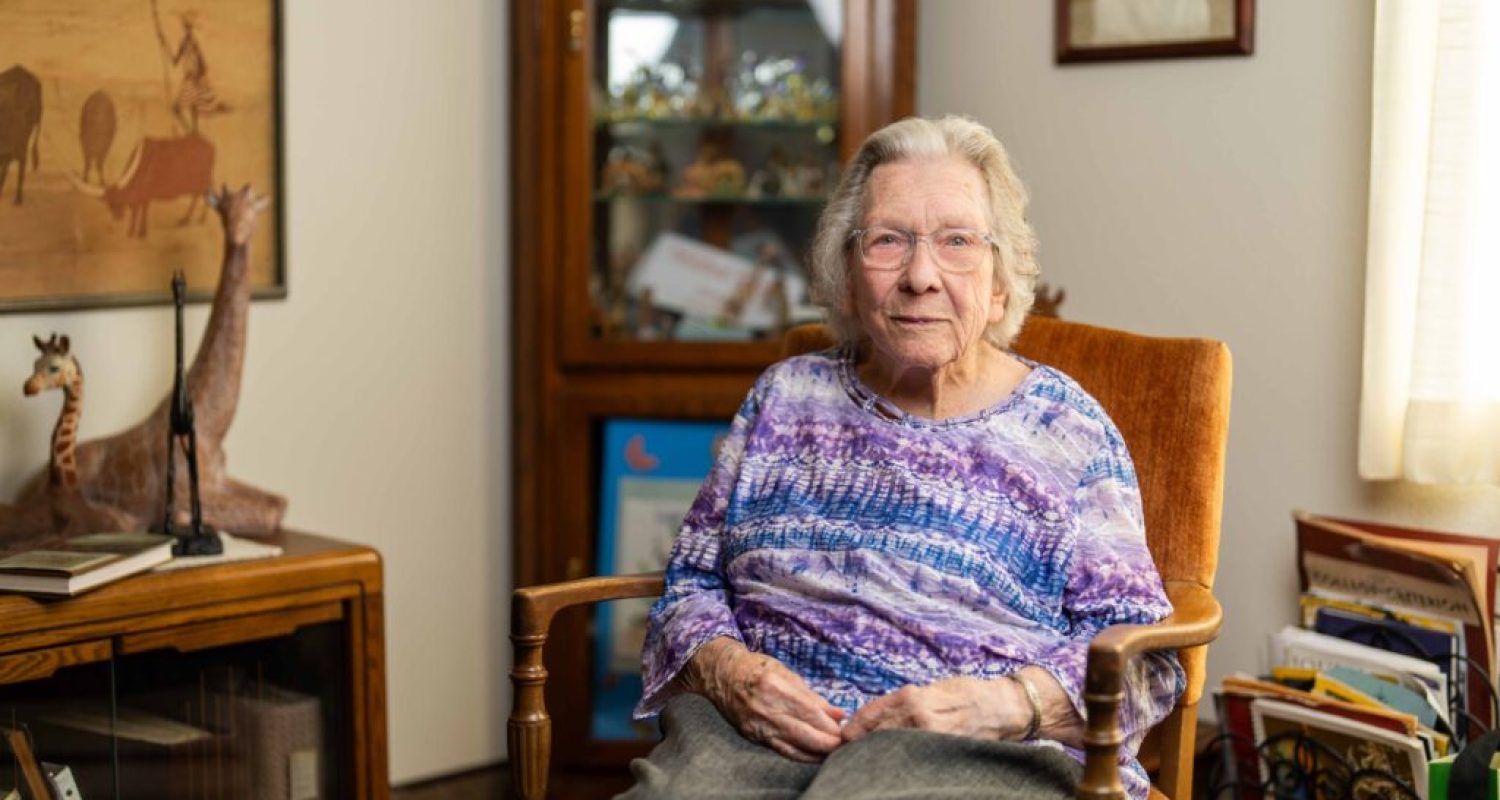
By Paul C. Herrmann ’00, PhD, chair, pathology & human anatomy, vice dean of academic affairs for the School of Medicine
Published in the fall/winter 2023 ALUMNI JOURNAL
Bios edited for clarity and style by Dr. Herrmann and Hillary Angel, senior communications specialist, Loma Linda University School of Medicine.
Reminiscenes
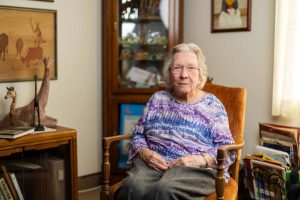
Mildred A. R. Stilson ’46 holds the distinction of being the longest-lived/living member of all time within the department, as well as a “Blue Zones ambassador.”
Born in India to missionary parents, her family returned to the United States in 1930 when she was 10. The family traveled to Loma Linda via freight train, where her father, Floyd W. Smith ’36, began medical school. From an early age, Dr. Stilson desired to become a physician like her father. She and her future husband, Donald L. Stilson ‘46, met at what later became La Sierra University.
Mildred’s educational journey led her to Pacific Union College, where she earned a BA in science with a minor in English. Both Mildred and Donald were accepted into Loma Linda University School of Medicine (LLUSM), where they were part of a class that included 90 men and only 7 women. This was during World War II, and the U.S. government offered delayed Army admittance with full medical school tuition support to qualified students. This assistance provided just enough financial support to allow them to marry, provided they resided with Mildred’s family. Mildred and Donald were married in August 1943 and graduated together from LLUSM as members of the class of 1946.
As they had promised to serve in overseas medical work while enrolled in medical school, they were “tentatively” placed in charge of Ishaka Hospital, an under-construction 120-bed hospital, in Uganda, East Africa. Because the assignment was based in Kenya and Uganda, they were required to obtain British medical registration. In September 1946, Drs. Stilson headed for England to study in London hospitals and clinics, while taking sections of the British board examinations every three months. After 15 months, the Stilsons had both passed all four sections of the British boards. On a chilly day in December 1948, the weary pair left London on a ship for Mombasa, Kenya. Within a week, they were traveling across Kenya to Kendu Mission Hospital. Mildred learned the ropes from the hospital physicians, while Donald made visits to the building site for their assigned Ishaka Hospital. Upon moving to their assigned hospital, Donald supervised construction, while Mildred treated patients on the back porch and under the roof of the partially constructed wards. She learned how to practice with limited supplies and few trained helpers. Clean water was scarce. There were no telephones and no electricity except via a generator operated for three hours per day in emergencies. Surgeries were performed utilizing daylight or kerosene lamps. Despite this, Mildred performed many successful cesarean sections with her husband serving as anesthesiologist.
After 12 years, Ishaka Hospital was a fully functioning hospital, and the Stilsons returned to the U.S. with vast medical missionary experience and two children. Mildred transitioned from general medicine/OB/surgery, which she practiced in Kenya, to board certification in pathology so she would have time to balance family and the practice of medicine. She completed her residency in the Loma Linda University (LLU) department of pathology. After working five years at Riverside County Hospital, she returned to Loma Linda. She served as a faculty pathologist from 1970–1988, primarily performing autopsies and teaching medical and allied health students.
When asked how medicine changed over her incredible 102-year life, Dr. Stilson responded: “The focus has changed. We used to say here is a person, a child of God, who is in trouble. Now the focus is on treating symptoms and lab values. We must not forget the person.”
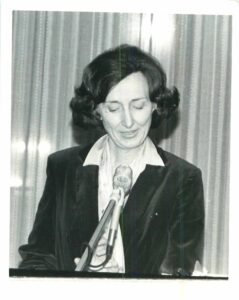
Thais V. Thrasher ’57 was born along the Columbia River on a peach orchard that is now completely submerged due to later dam construction. She spent her primary, secondary, and college years in Washington state, graduating from Walla Walla College, cum laude with a major in chemistry, along with her future husband, James A. Sadoyama ’57. The two continued their education as classmates in medical school. She was one of only five women in her medical school class. She began teaching pathology at LLU following an internship at Los Angeles County General Hospital and residency training at both Glendale Sanitarium Hospital and Loma Linda Sanitarium and Hospital. She was exceptionally well trained academically, having taken a later fellowship in breast and gynecologic pathology at Columbia Presbyterian Hospital. Despite having mastered pathology, Dr. Thrasher followed a lifelong interest in psychiatry, re-entering residency in her mid-50s and completing her career as a psychiatrist in the Pettis Memorial Veterans’ Administration Medical Center as chief of the outpatient psychiatry clinic. Dr. Thrasher was exceptionally fond of students and took a personal interest in each one’s well-being. She and her husband fed countless students in their home through the years, at times hosting dinners and pool parties in excess of 50 attendees.
Dr. Thrasher was an outstanding teacher, known as “Dr. Red Pen” to her students due to her exacting standards, especially when it came to pathology case write-ups. Although the residents found her the most attentive to detail attending they worked with, it didn’t take long after fledgling as new attendings to appreciate all she had taught them. Her scrupulous attention to detail during their training made them outstanding pathologists.
Current Faculty
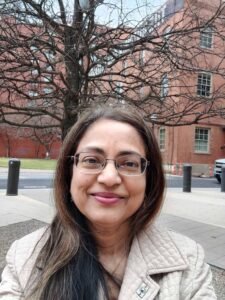
Shobha Castelino, MD, FAC completed medical school in India and discovered the fascinating world of medical research. She was accepted into a graduate program at Duke University focusing on basic science research, particularly in cancer. After completing a Master’s degree, she moved to California with her husband and worked as a research associate in cancer research at UCLA and USC. When her children were older, she pursued pathology residency training at LLU and completed cytopathology fellowship training at Johns Hopkins University. She returned to Loma Linda and is delighted to give back to medical students, pathology residents, and cytotechnology students with the same educational opportunities she has received.
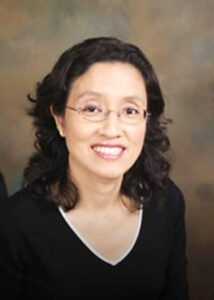
Evelyn B. I. Choo ’92 received her Bachelor of Science degree from University of California, Irvine. She completed a combined anatomic and clinical pathology residency at LLU and fellowships in surgical pathology and cytopathology at Los Angeles County-USC Medical Center.
In 1999, Dr. Choo returned to Loma Linda as a faculty member, where she enjoys teaching medical students and working with residents. She also serves as a preceptor for the medical student elective pathology rotation and takes pride in the growing interest among students in the field of pathology.
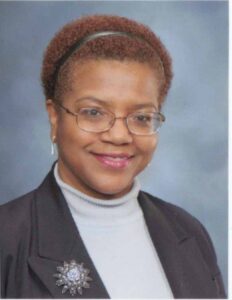
Camilla J. Cobb, MD, FAC is a graduate of Meharry Medical College in Nashville, TN. She completed her anatomic and clinical pathology residency and cytopathology fellowship at Los Angeles County and USC. Her initial faculty appointment was granted by the University of Texas, where she held a joint appointment within the School of Allied Health. Dr. Cobb moved from Texas to Harbor UCLA and then ten years later to the Keck School of Medicine at USC. She joined the pathology and human anatomy faculty of LLU in 2006, where she currently serves as professor and section chief of cytopathology. She has extensive experience nationally as well as internationally as a superb educator and lecturer and has been recognized numerous times for service, expertise, and teaching. In 1984, she served as the Doping Control Coordinator for Judo during the 1984 Summer Olympics in Los Angeles.
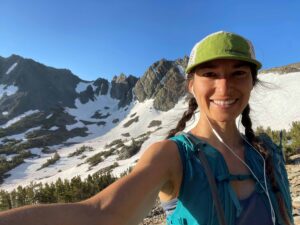
Camilla J. Cobb, MD, FAC is a graduate of Meharry Medical College in Nashville, TN. She completed her anatomic and clinical pathology residency and cytopathology fellowship at Los Angeles County and USC. Her initial faculty appointment was granted by the University of Texas, where she held a joint appointment within the School of Allied Health. Dr. Cobb moved from Texas to Harbor UCLA and then ten years later to the Keck School of Medicine at USC. She joined the pathology and human anatomy faculty of LLU in 2006, where she currently serves as professor and section chief of cytopathology. She has extensive experience nationally as well as internationally as a superb educator and lecturer and has been recognized numerous times for service, expertise, and teaching. In 1984, she served as the Doping Control Coordinator for Judo during the 1984 Summer Olympics in Los Angeles.
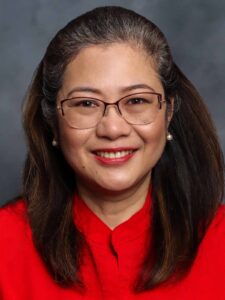
Mia C. Nepomuceno-Perez, MD, FAC is a graduate of the University of the Philippines, Manila. She completed a combined anatomic and clinical pathology residency at Beth Israel Medical Center in New York, followed by a head and neck pathology fellowship under the late E. Leon Barnes, MD, at University of Pittsburgh -Presbyterian UH. In 1998, she joined the LLU faculty and currently serves as a professor. In 2017, she was appointed co-director of quality for anatomic pathology. Dr. Nepomuceno-Perez co-authored a chapter titled, “Not Married to Medicine: Women Physicians with Non-Physicians Spouses or Partners,” in the School of Medicine book, “Building My Village.”
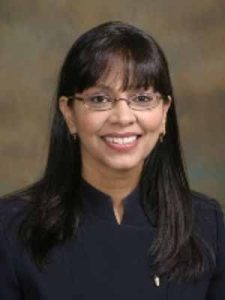
Anwar S. Raza, MD, FAC is one of the department’s most politically active members. She serves as the California delegate to the College of American Pathologists and as a member of the College’s Surgical Pathology Committee. Beyond her political involvement, she is a superb educator, having taught medical students as well as residents at USC and LLU. She has won numerous teaching awards, including from USC, the Osler Institute of Pathology, Assoc. of Pakistani Physicians of North America, and LLU. Her journey brought her to LLU after graduation from Sind Medical College, Pakistan. Upon completion of the residency at LLU, she took a position within the USC cytopathology fellowship program, both as a fellow and later faculty member of cytopathology and surgical pathology, before returning to LLU, where she currently holds the position of professor and serves as the director of the California Tumor Tissue Registry.
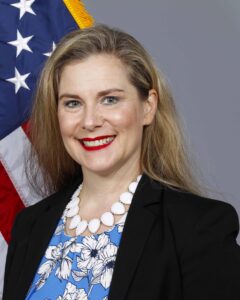
Heather Lynn Rojas ’03 decided to pursue a career in medicine as a teenager. She went to community college and then La Sierra University, seeking a Christian education. She was the first college graduate in her immediate family and was interested in pursuing a career in obstetrics and gynecology. During her first year of medical school, she met and married her classmate and husband of 24 years, Hugo A. Rojas ’06, and they had two children during medical school and residency.
Following the advice of Jeffrey D. Cao ’71, Dr. Rojas completed a post-sophomore fellowship in pathology and fell in love with the field. She completed a pathology residency at LLU and a cytopathology fellowship at USC and Los Angeles County General, then returned to LLU, where she currently works as an associate professor, and as chief of pathology and laboratory services at the Jerry L. Pettis Memorial Veterans’ Hospital in Loma Linda.
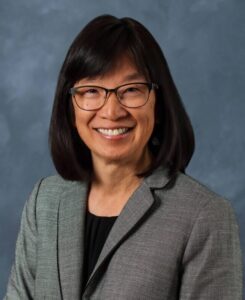
Pamela J. Wat ’86 is a second-generation member of the department, following in the footsteps of Bo Ying Wat ’49, her father. Following an internship at Kettering Medical Center in Ohio, a residency at LLU, and a surgical pathology fellowship at Mayo Clinic, she joined LLU faculty in 1992. Dr. Wat and her father worked closely together for many years, jointly covering surgical pathology and cytology services. Dr. Wat’s wide range of academic interests includes serving as the medical director of the cytotechnology program and holding a faculty appointment within the School of Allied Health.
In Their Own Words
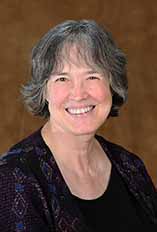
Resa L. Chase ’76-B: In the early 1970s, while being interviewed for admission to medical school, I was asked if I thought I could handle working in “the man’s world of medicine.” Really? I “manfully” resisted rolling my eyes and feigned respect. Unbeknownst to my interviewer, I had a role model, my mother, Butonne Davis Currier ’53-A. She clearly demonstrated that a woman can have a career in medicine, a balanced life of family, artistic endeavors, and spiritual meaning. My life has been blessed by many people in addition to my mother. My late husband of 43 years, Donald R. Chase ’76-B, supported me as we went through medical school and residency together. We both chose pathology and were blessed to find jobs in the same community.
As much as I love pathology practice, education holds my heart. While numerous faculty offered guidance and mentoring, three particularly shaped me as an educator. Mildred A. R. Stilson ’46 introduced me to teaching. During my residency, she offered lecture experience teaching pathology in the Schools of Nursing and Allied Health Professions. As I began teaching medical students, I had the pleasure of working with Robert L. Schultz, PhD, FAC in histology. Finally, Leonard S. Werner ’81-Res introduced me to the administrative aspects of education when I was invited to assist him in the dean’s office. These mentors were instrumental in my being twice named Teacher of the Year (2003, 2022). In addition to didactic teaching, I shared the honor of sponsoring the class of 1984 with my husband, and Bo Ying Wat ’49. My educational interests are global as well as local. When the California Tumor Tissue Registry moved to LLU, I helped Dr. Weldon Bullock and later Dr. Donald Chase manage its internationally recognized continuing education program. For more than four decades, both the practice of pathology and education have provided me with great joy and satisfaction, for which I am deeply grateful.
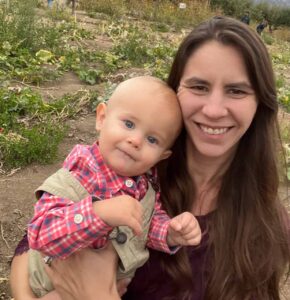
Chelsea Heimbaugh, MD, FAC: I grew up in Pleasanton in the East Bay area before attending Cal Poly San Luis Obispo, where I entered as an architect major, given my propensity for building house layouts with Legos as a child and my enjoyment of fine arts and mathematics. I quickly came to the realization that architecture was not my calling. I switched to biology minoring in anthropology and geography. Near the end of college, I explored becoming a doctor and attended New York Medical College. Early in my third year, I discovered pathology and found my way to Loma Linda for residency training. After completing subspecialty training in cytopathology at Los Angeles County General and USC, I was invited back to LLU as faculty. While I have carried the official title of doctor for a number of years, it is not the only title I hold. I am also known as wife and amateur artist/crafter. My most proudly held title, however, is mom. Being a woman in medicine brings unique challenges, particularly for a physician mom. The balancing act of child care, chronic sleep deprivation, the constant guilt of absenteeism vs. fulfilling career goals, along with the growing tally of “mom fails” can be difficult. I can only hope that in addition to providing exemplary patient care and helping train new residents, I am setting a positive example that will inspire my children to work hard in pursuit of their own dreams, whether in medicine, architecture, or any field of their choice.
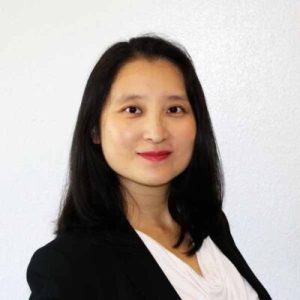 Yan Liu, MD, FAC: I was born into a family with a strong medical background, which naturally led me to pursue a career in this field. I graduated from Xiangya School of Medicine in China and completed my AP/CP residency training at Loma Linda University Health. I also completed my hematopathology fellowship training at UCLA. Following my training, I joined our pathology department as a hematopathologist.
Yan Liu, MD, FAC: I was born into a family with a strong medical background, which naturally led me to pursue a career in this field. I graduated from Xiangya School of Medicine in China and completed my AP/CP residency training at Loma Linda University Health. I also completed my hematopathology fellowship training at UCLA. Following my training, I joined our pathology department as a hematopathologist.
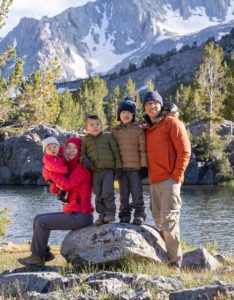
Yan Chen Wongworawat, MD, PhD, FAC: Being a physician is challenging, and being a woman in medicine can be even more so. Striving to balance work and family life is not uncommon. I’m fortunate to work at LLUH, where I receive great support from my family, co-workers, and community. The spirit of “To make man whole” applies not only to patients but also to healthcare workers and their families. This is what I truly believe.
DEPARTMENT AT A GLANCE
Surgical Pathology Cases
Annual System-Wide 35,189
Clinical Laboratory Tests
Annual System-Wide 8,713,775

